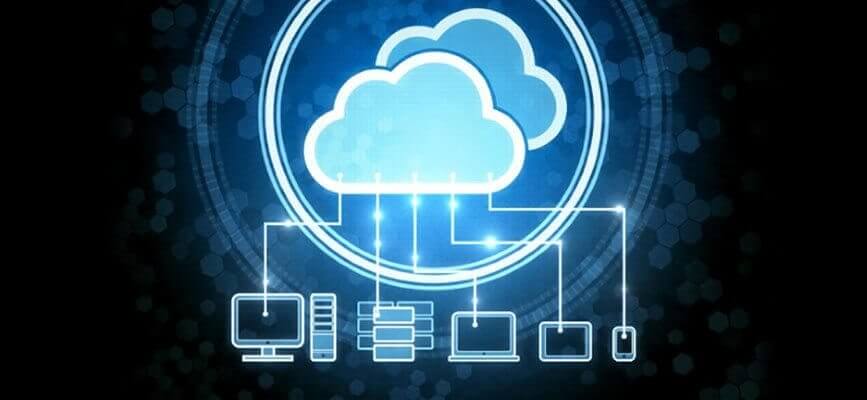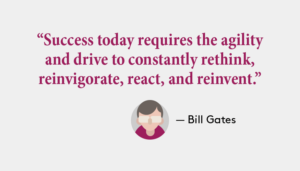When it comes to implementing a new CRM or ERP system, one of the first things that comes to mind is “On-Premise vs Cloud” and which would suit your businesses needs best.
Both cloud and on-premise have their advantages depending on the scale of the task at hand. For example; a task wouldn’t warrant a cloud based system if your sole purpose was to transfer files between departments, it also wouldn’t warrant an on-premise system simply to manage emails and email accounts.
Ultimately, the debate of cloud vs on-premise business solutions still remains a close call, especially with cloud capabilities improving and now matching, if not surpassing the capabilities of an on-premise solution. With this in mind, costs can also be a big factor when deciding which route to go down.
Think of the bigger picture
A common misconception when comparing cloud vs on-premise solutions is that on-premise solutions are a one-off cost and cloud solutions are recurring ones. However whereas “Cloud” or “SaaS” solutions are recurring, they are considerably lower over time as well as being a much lower initial investment.
Unfortunately, cost doesn’t simply stop for on-premise solutions even after the hardware, licence fee and implementation has been complete. There are also many other costly factors to take into consideration, these costs typically rise over time and have not have been accounted for during the decision making process. This can lead to large, unforeseen and unnecessary expense.
1 – Hardware
On-Premise: Depending on how big your business is and how many users a server would need to accommodate – would depend on the initial cost of the server. For the hardware alone, a server to accommodate 10 users with little to no room for additional users would start around the £3,000 mark.
This would just be for the server itself, there are other costs to consider (other than the licence fee) such as anti-virus software at around £400 pa, Windows Server operating systems starting around £900+, annual maintenance contracts which is typically 18-20% of licence costs, installation be it staff or outsourced, space to host the server, cooling systems …… As you can see, the list just goes on. Did we mention this doesn’t include the licence fee?
So in total you could be looking at around £8,000 just to have an on-premise server before you’ve even committed to a solution – OUCH!
Cloud: As cloud based business host their own software, there are no hardware fees -WINNER!
2 – Electricity
On-Premise: Something that is commonly overlooked is the annual electricity bill for running a server. Keep in mind a server should be on 24 hours a day, 7 days a week, 365 days (366 on some occasions) per year. Constantly consuming electricity obviously comes at a cost, billed by an electricity provider, it isn’t always associated with on-premise server running costs.
Different servers will consume energy at different rates, a good figure to go by would be 900 watts per hour. According to confused about energy the cost per kWh is £0.154 (1000 watts = 1kWh) Which equals 21.6 kWh used per day, 151.2 kWh a week and 7,862.4 kWh a year. At a cost of 15.4 pence per kWh that’s around £1,210.81 a year, per server.
Just like the server, air conditioning for the server room needs to be on at all times, and depending on the room size, depends on the air conditioning needed. Energy consumption for this can vary, anywhere between 500 watts to 1500 watts per hour, going below mid-range at 900 watts like the server, so that’s another £1210.81 a year.
Cloud: Cloud based businesses or SaaS businesses cover these cost’s themselves, there are no electricity consumption fees.
3 – Security
On-Premise: Other than the cost’s of server anti-virus software and back up software, you have to consider your premises security. It’s not enough to lock a server door or use randomly generated passwords for server access, protecting your data should be top priority.
Depending on your businesses headquarters, depends on security costs. If shared, is there a 24/7 security guard and gated entrances? If your a singular business on the premises, do you have the right security infrastructure in place or the staffing budget for a security officer? Security is very bespoke per a businesses situation, depending on a businesses circumstances the cost could be extravagant or incorporated in a rental agreement.
Cloud: Cloud computing is now more secure than on-premise solutions thanks to how SaaS businesses handle their security. Both software and premises are managed by professional individuals, security comes as standard and no additional costs are required.
4 – Upgrading
On-Premise: Sadly,hardware has a limited lifespan, just look at how often you upgrade your phone, buy a new TV or a new computer. Servers are the exact same with an average lifespan of around 5 years, anything over 5 years and your essentially putting your business at risk. Servers starts to deteriorate making data migration more challenging and the risk of your systems completely collapsing increases.
If it’s not your hardware which is becoming worn then (hopefully) your business has experienced significant growth and your on-premise solution can no longer handle the amount of requests or users needed to manage day to day tasks.
Regardless of the circumstances, on-premise servers eventually need to be replaced. As well as the initial hardware costs, there will be additional costs of migrating data from one server to another, adding more licences, consultancy/implementation fee’s for the new hardware, time wasted waiting for upgrade implementation and possibly other difficulties may arise – OUCH!
Cloud: Upgrades and patches usually take place behind closed doors, many users may even be unaware of changes. The only real cost for upgrades a SaaS customer may encounter is having to pay is to add additional user to their business solution, hardware/security/maintenance upgrades don’t come at a cost – WINNER!
5 – Training
On-Premise: Training typically tends to be more expensive for on-premise business solutions. The main reason for this is that a consultant would need to visit your premises in order to train your staff, which incurs more cost because of things like travel, consultant fee’s and more hours invested into arranging training.
There is also a larger delay in training due to the above reasons which can cause its own problems. When taking on multiple members of staff or seeking cover for a specific department, they may require specific training which is then reliant on both parties being available on an agreed time/day. This isn’t always the case but it can happen.
Cloud: The main reason SaaS training tends to be cheaper is because most of the resources are online based. There may also be video training, data sheets and other resources businesses would have made available for it’s users.
If one-on-one training is required or a couple of users need guidance, most of the training can be done online with a specialist on the other end, cutting down travel costs and time.
6 – Downtime
On-Premise: In the scary (and inevitable) event of all systems going offline, how much does that cost your business? Most importantly, how much does that cost your customers? From a non-profit or services based perspective, systems going down for several hours at a time can be a nightmare.
Some of the things to consider in calculating downtime cost; How much productivity is lost? How many people does downtime effect and what are their labour costs? How many transactions might you have missed out on and what is irrecoverable? There are many blogs out there covering this subject but each cost of downtime is specific to individual businesses.
As mentioned in the previous blog, exchange on-premise uptime was 99.65% which a year would be a total of 30 hours and 45 minutes downtime.
Cloud: All systems suffer from downtime, NetSuite states it has a uptime of 99.98% which equates to roughly 1 hour and 46 minutes of downtime, a year.
Final thoughts
It would be naive for us to dismiss all costs that on-premise customers have to endure simply because cloud based customers only pay a recurring fee. Some things like security, maintenance and electricity are built into the costs of cloud computing but they are much lower in comparison to what an on-premise solution would cost for multiple reasons.
Cloud based businesses have the flexibility to purchase items in bulk knowing they have a larger need for them, in return lowering the cost and the customers monthly price. Security has to be more advanced which would drive cost up but when that cost is spread across 100’s-1000’s customers, it’s often classed as an overhead and not incorporated into customers pricing because of it’s importance to the sustainability of the business.
Downtime is a lot less common for cloud based businesses as they have to accommodate to a larger customer base, meaning they have to invest more and ensure they employ dedicated professionals to keep their systems up.
The biggest difference is an on-premise solution is typically for a singular business meaning a singular business has to cover the costs, a cloud based business will cover the majority of costs as it’s essential for them but not only do they receive large discounts, they can offset the cost across all their customers should needs be. Making cloud computing much more cheaper than the counter-part and is one of the cloud wins in the on-premise vs cloud computing argument.
If you would like to discuss how our cloud based business solution can help save you money in comparison to on-premise solutions, please get in touch and feel free to share your thoughts on this article in the comments below.










